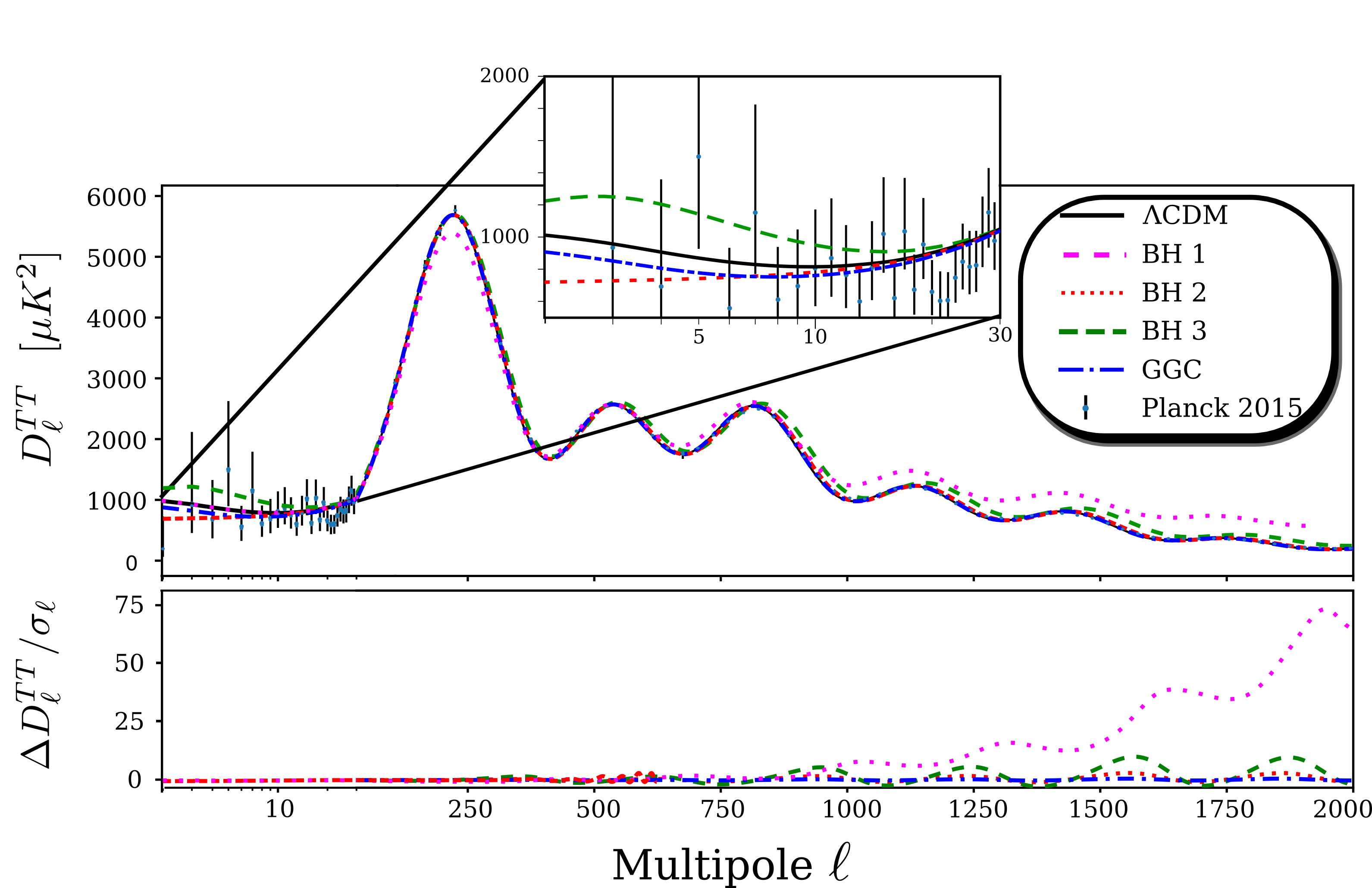Research
With the development of observational techniques over the past few decades,
the research on cosmology has made enormous progress. By exploiting observational data, it is now possible to probe the physics like

Figure: Observational constraints on several dark energy models from CMB temperature anisotropies.
Taken from Peirone, Benevento, Frusciante, Tsujikawa, Physical Review D 100, 063509 (2019).
- Evolution of the early universe based on quantum gravity and string theory
- Growth of primordial density perturbations for the origins of Cosmic Microwave Background (CMB) temperature anisotropies and large-scale structures
- Dark energy and dark matter
- Black holes, neutron stars, and gravitational waves
- Construction of theoretically consistent inflationary models and their observational constraints
- Particle production in the early Universe
- CMB temperature anisotropies
- Dark matter and growth of large-scale structures
- Dark energy—construction of theoretical models and observational constraints
- Extended theories of gravity and their observational signatures
- Physics of black holes and neutron stars, and testing the regime of strong gravity through gravitational waves
